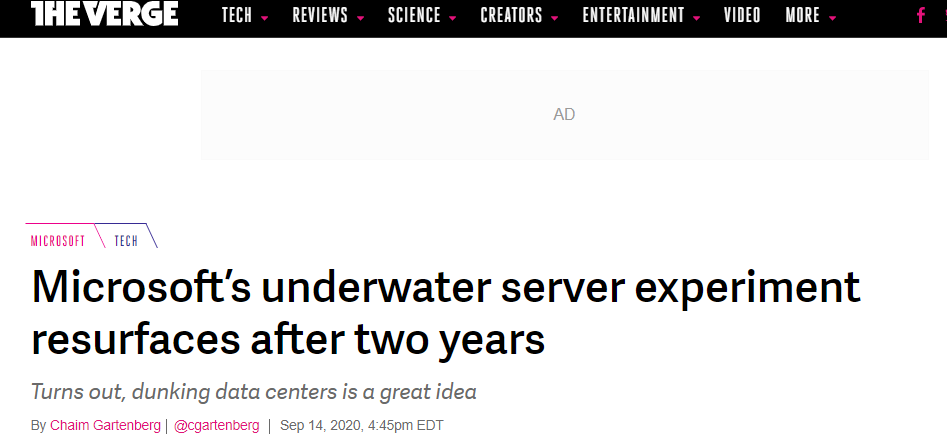In 2018, Microsoft did an experiment where it submerged an entire data center of 864 servers and 27.6 petabytes of storage to the bottom of Scotland’s Orkney Islands. Two years later, the server has been retrieved from the bottom of the sea covered with algae, barnacles, and sea anemones but the tech company said that the latest experiment was a success.
The Verge: Microsoft says the underwater data center had just one-eighth the failure rate of a land-based data center, a dramatic improvement

Back in 2018, Microsoft sunk an entire data center to the bottom of the Scottish sea, plunging 864 servers and 27.6 petabytes of storage 117 feet deep in the ocean, The Verge recounts. Today, the company has reported that its latest experiment was a success, revealing findings that show that the idea of an underwater data center is actually a pretty good one.
On land, data centers run into issues like corrosion from oxygen and humidity and controlling shifts in temperatures. But in a water-tight environment with tight temperature control, far fewer issues crop up.
Microsoft says the underwater data center had just one-eighth the failure rate of a land-based data center, a dramatic improvement.
Gizmodo: Inside, 864 servers with a collective 27.6 petabytes of storage and cooling infrastructure braved the elements in an atmosphere of inert gas

According to Gizmodo.com, 864 servers with a collective 27.6 petabytes of storage and cooling infrastructure braved the elements in an atmosphere of inert gas—Microsoft noted that conditions European Marine Energy Centre test site can include nine mile per hour tidal currents and 60-foot waves during storms. In fact, Microsoft claimed the equipment fared better than land-based systems.
That vindicates the hypothesis the seafloor is preferable for server farms to topside environments where gear can be damaged by corrosion from oxygen and humidity, constant temperature changes, and physical movement during maintenance. Putting data centers underwater may also enable closer placement to customers and obviously makes cooling far easier, and Microsoft has previously suggested they could be powered by tidal generators. The units are also portable and could be easily scaled into larger operations.








